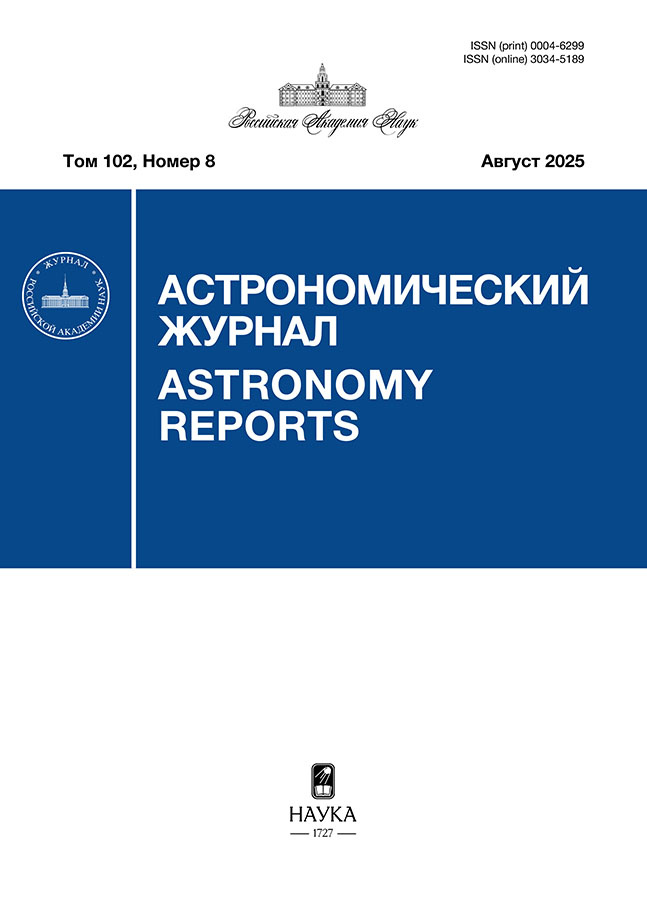Vol 102, No 8 (2025)
Articles
Search for the Possible Members of the Open Cluster NGC 3532 with Poor Astrometric Solutions of Gaia DR3
Abstract
 641-652
641-652


Effect of luminosity outbursts on the amount of pebbles and ice mantles in protoplanetary disks
Abstract
 653-670
653-670


Aspects of Optimization of the Transit Light Curve of the Binary System with a Single Minimum in the Eccentricity Components
Abstract
A high-precision algorithm for interpreting transit light curves in the model of an eclipsing classical binary star-exoplanet system has been improved for interpretation moving from the variables “eccentricity (e)–periastron longitude (ω)” to the eccentricity components (ecosω,e sinω).The possibilities of interpretation by eccentricity components have been studied. It has been shown that the dependence of the minimum’s
shape on e sinω alone is clearly expressed for small values of e and weakens with increasing e. The linear correlation between the radius value, which is characteristic of any values of e, is shown.
 671-682
671-682


Absolute parameters and apsidal rotation of the eclipsing system V501 Mon
Abstract
Our photoelectric measurements over the past 30 years and a new solution of the radial velocity curve of the eclipsing star with an elliptical orbit V501 Mon (A8 + F2) allowed us to determine with high accuracy all the main parameters of the system: T1 = 7380 ± 60 K, M1 = 1.66 ± 0.03 M☉, R1 = 1.90 ± 0.02 R☉, T2 = 6920 ± 30 K, M2 = 1.47 ± 0.02 M☉, R2 = 1.58 ± 0.01 R☉. The photometric parallax determined in the study coincides with the Gaia value π = 0.00103″ within the error limits. For the first time, the apsidal rotation velocity ω̇_obs = 0.022°/year was accurately measured, which, within the error limits, matches the theoretical value: ω̇_theor = 0.024°/year, 70 % of this value being a relativistic contribution. The system possibly satisfies the condition of synchronism between rotational and orbital angular momenta. The age of the stars was determined to be 0.95 billion years. The main component is probably a pulsating variable star of the δ Scuti type (DSCT).
 683-706
683-706


Tayler instability of magnetic field as possible reason for the period changes in Ap star 56 Ari
Abstract
 707-717
707-717


Characteristics of Non-Kolmogorov Atmospheric Optical Turbulence for High-Resolution Astronomical Observations
Abstract
 718-727
718-727


Average temporal profiles of solar flare microwave emission: morphology and application
Abstract
 728-742
728-742












